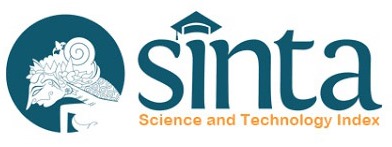Prediction and Mapping of Potential Bioactive Peptide from Traditional Fermented Anchovy (Rusip) using Bioinformatics Approaches
Abstract
Bioactive peptides can be obtained from various sources, one of which is a fermented food. Rusip is a traditional Indonesian fermented food made from anchovy (Stolephorus spp.), which has the potential as a source of bioactive peptides. Currently, conventional approaches (in-vivo and in-vitro) are still widely used in the analysis of bioactive peptides, although this method is laborious, costly, and time-consuming. A new approach, bioinformatics, has allowed faster and more efficient analysis. This study aimed to predict, identify, and map the potential of bioactive peptides produced from rusip using the bioinformatics approach. Simulations of proteolysis of anchovy parent proteins (actin, myosin, troponin, tropomyosin a-chain, and tropomyosin b-chain) with PeptideCutter using two different groups of enzymes (simulations type I and II) showed that the more enzymes that play a role in proteolysis, the less the number of peptide fragments formed. Identification of the bioactivity of peptide fragments using the BIOPEP-UWM database revealed that the peptide fragment from actin cleavage using simulation 1 has the most significant percentage of bioactive peptides (91.55%). The occurrence frequency analysis also revealed that the bioactivity was anti-diabetic, anti-hypertensive, and antioxidant for each target protein, and the simulation had the highest probability of occurrence. The results of this study indicate that Indonesian fermented anchovy 'rusip' has high bioactivity potential and can be part of a healthy diet that can prevent non-communicable diseases.
Keywords
Full Text:
PDFDOI: https://doi.org/10.15578/squalen.725
Article Metrics
 PDF Download: 56
PDF Download: 56
Refbacks
- There are currently no refbacks.
ISSN : 2089-5690(print), E-ISSN : 2406-9272(online)
This work is licensed under a Creative Commons Attribution-NonCommercial-ShareAlike 4.0 International License.








